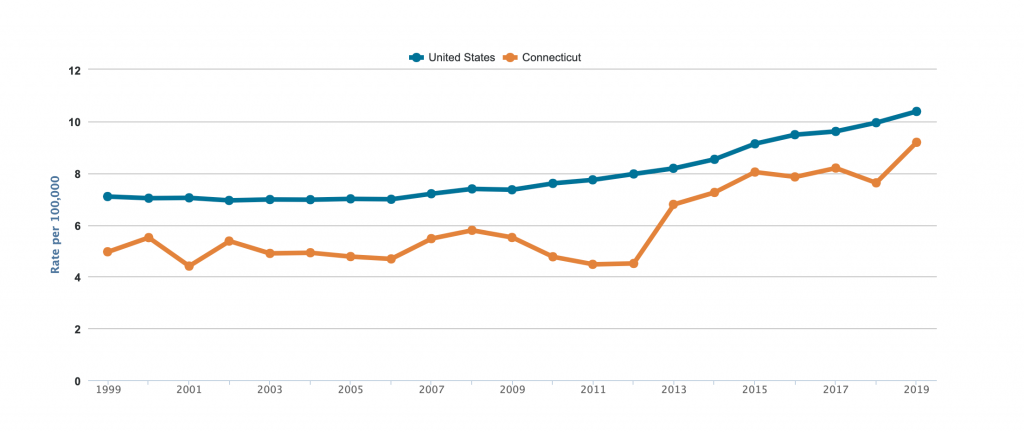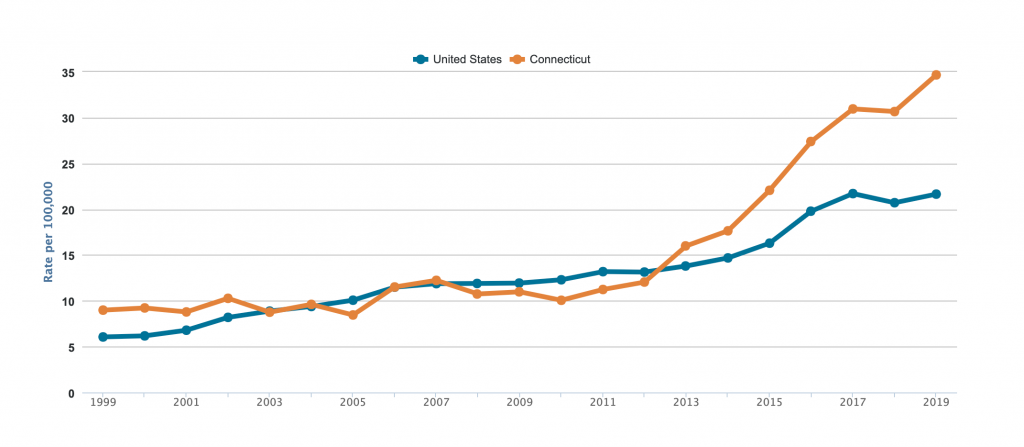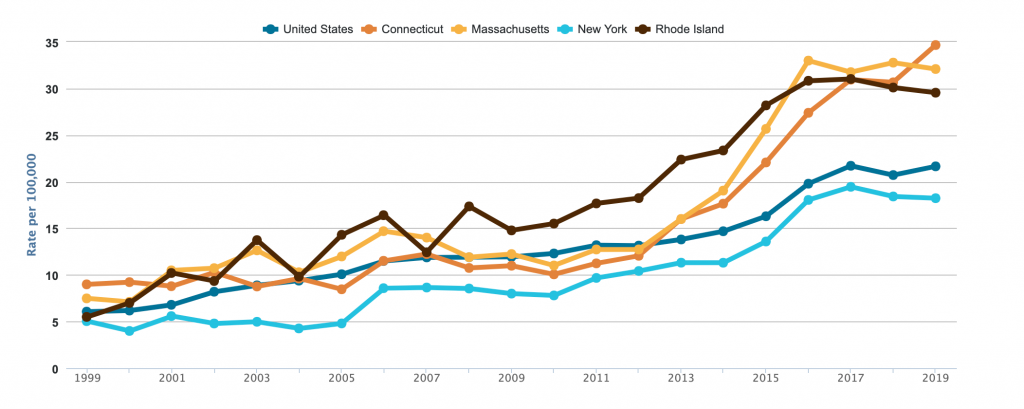CT residents over twice as likely to die of opioid or other drug poisoning than from alcohol

Connecticut ranked 17th lowest among states in alcohol-related deaths per capita, but seventh highest in opioid-related deaths in 2019, based on an analysis of data from SHADAC’s State Health Access Data Assistance Center. That year, Connecticut residents were 245% more likely to die from an opioid or other drug poisoning than from alcohol. (Opioid or other drug-related causes include heroin, cocaine, psychostimulants, and synthetic opioids.) Until 2012, Connecticut rates of opioid-related deaths were very close to the US average; since then Connecticut’s rate has climbed much faster than the US rate. In contrast, alcohol-related deaths in Connecticut have largely tracked with the trend for all states.
Interestingly, Connecticut’s per capita rates of opioid prescriptions were slightly below the US average in 2019, according to SHADAC. In contrast, Connecticut was tied for the ninth highest among states last year in alcohol use, according to the CDC’s Behavioral Risk Factor Surveillance System.
In 2019, there were 409 alcohol-related deaths in Connecticut, a rate of 9.2 per 100,000 people; 12% below the US rate of 10.4. However that same year, Connecticut residents were over twice as likely as other Americans to die of an opioid or other drug poisoning (31.7 per 100,000 CT vs 15.5 US average).

Rates of alcohol-related deaths in Connecticut have tracked just below the US rate since 1999. Even so, Connecticut’s rate has more than doubled in that time, rising from 5.0 per 100,000 people in 1999 to 10.4 in 2019.
(The following graphics were generated at SHADAC’s State Health Compare.)

With the exception of Rhode Island recently, surrounding states have also tracked below the US average in alcohol-related deaths.

Connecticut rates of opioid and other drug poisoning deaths shot up over the US rate in 2012.

Massachusetts and Rhode Island also experienced this increase at the same time, while New York mirrored the lower national trend.


